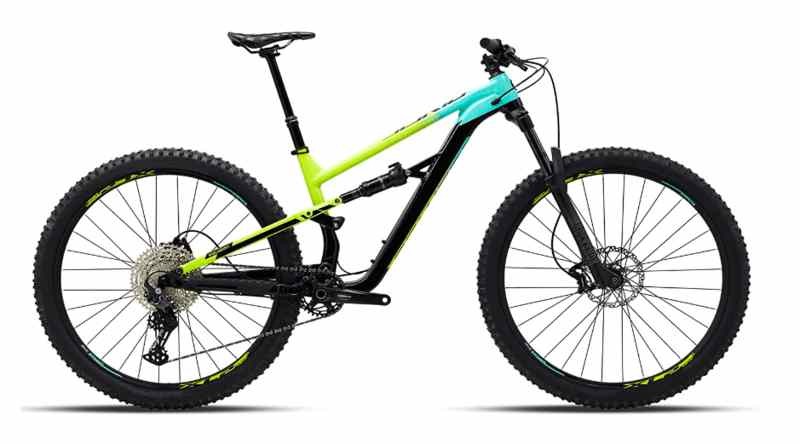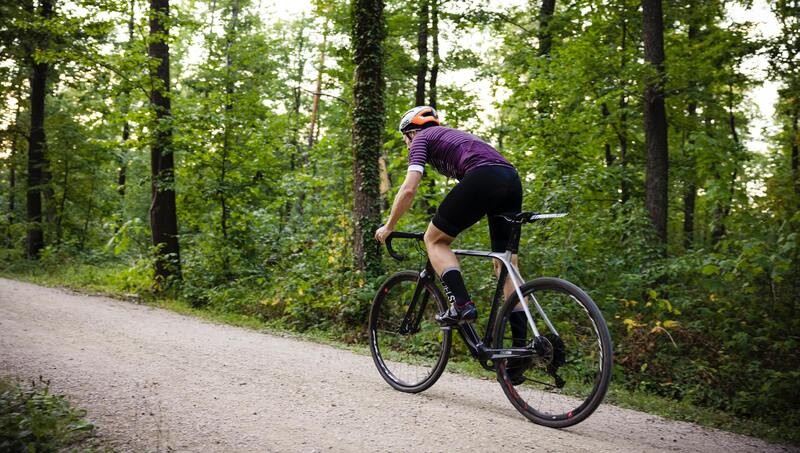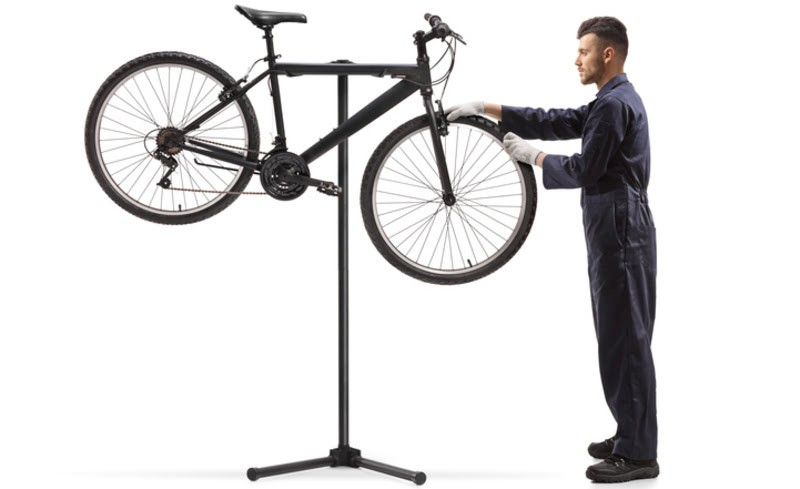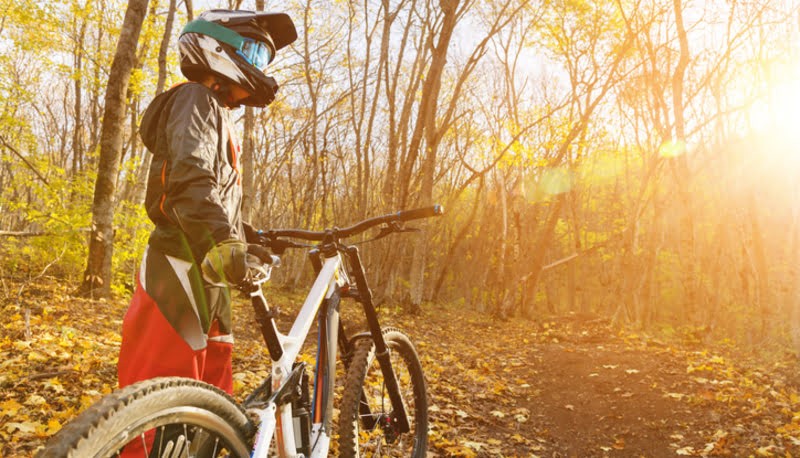Almost everyone knows how to ride a bike — it’s one of the most common pastimes in the world.
But before you get on your own bike for exercise or pleasure, there are some essential things you should know about cycling, like what is cycling speed, what is average cycling speed, and how to cycle faster.
In this article, we’ll explore answers to these questions and learn tips to improve riding techniques for achieving maximum speed in less time.
What is Cycling Speed
Cycling speed is the speed at which a cyclist travels while on a bike. It can be measured in either kilometers per hour (km/h) or miles per hour (mph). Measuring this speed is vital because it affects the time it takes to cover a given distance.
Faster cyclists can cover more distance at the same time than slower riders but expend more energy doing so.
What is a Good Average Cycling Speed
There is no one answer to this question since the average speed will depend on the terrain you are riding on, the type of bike, and your own fitness level.
However, a good average speed for a beginner is about 10 miles per hour on a smooth road but it still can vary a little depending on your bike type.
In addition, if you are cycling on a bumpy road or on a mountain trail, this speed goes even further down.
This chart explains good average speeds on a flat road with a road bike:
| Experience Level | Average Cycling Speed Per Hour |
| Beginner | 10 mph |
| Average | 15 mph |
| Professional | 25 mph |
How to Calculate Average Cycling Speed
Generally speaking, cyclists will travel slower on rougher terrain because of rolling resistance but can maintain faster speeds on smoother surfaces. In addition, strong cyclists can sustain higher speeds than weaker riders on the same terrain.
The rider’s size and weight also influence cycling speed. For common ground, we can go with flat terrain, which a beginner can cover at 8-12 mph speed and a professional can cover at 25-28 mph speed. But this can still vary from person to person.
So, a better way is to calculate for yourself with this simple below-mentioned formula.
Average Cycling Speed = (Total Distance ÷ Total Time taken)
Consider you have covered a 60 km distance in 2 hours. So, the calculation is as follows:
Total distance covered = 60 km
Total time taken = 2 has average speed = 60km ÷ 2hr = 30km/h
How Cycling Speed Differs with the Kind of Bike
Many factors go into the average bike speed, but one of the most important is the type of bike. Road, mountain, hybrid, and electronic bikes are a few examples of bikes with very different speeds. Let’s understand them in more detail.
Mountain Bike Average Speed

Mountain biking can be a great way to get some exercise and explore beautiful scenery, but it can also be frustratingly slow. If you’re riding on seriously technical trails, your average speed will be between 4-8 mph. On the other hand, if you drive the same bike on flat terrain, the average speed goes 10-14 mph.
Road Bike Average Speed

Road bikes are typically designed to travel on flatter terrain, making them a good option for commuting and recreational riding. The average speed of a road bike when on a flatter elevation profile is between 14 and 18 mph. This number can vary on hilly terrain or in areas with more uneven surfaces.
Hybrid Bike Average Speed

These bikes are a combination of road bike and mountain bike features. On flat roads, these bike gives an average speed of 12-16 mph. However, this number goes down to 6-10 mph when riding uphill.
Overall, hybrid bikes are great options for beginners to get started with cycling, as they’re relatively easy to ride and require less effort on muscle strength or stamina compared to other bikes.
E-Bike Average Speed

E-bikes are available in various shapes and sizes, each offering a different top speed. In the case of pedal e-bikes, the maximum speed is 20mph. However, throttle e-bikes are capable of operating at somewhere between 20 mph to 28 mph.
By now, we know what cycling speed and average cycling speed are, how to calculate them for self-analysis, and what major factors affect them. Moving ahead, let’s talk about tips that can help improve our average speed gradually.
13 Tips to Achieve Desired Average Cycling Speed
Cycling at an average speed or above is essential for both safety and health. However, it can be challenging to achieve this speed on your own.
Down – Below we have outlined a variety of tips to help you cycle faster. You will see good results in no time if you abide by them with full sincerity.
1. Reduce Brake Frequency — Power Output

When you pedal the bike, your feet push the pedals in the same direction. This causes the chain to move along the sprocket and the bike to move forward.
The faster you pedal, the more force your feet need to push and the more your brake pads will grab onto the wheel.
If you’re braking unnecessarily, your feet must work harder than they need to. That means they must push against a lot of rolling resistance, which slows them down.
Plus, it takes more energy to pedal fast when you’re braking hard – you have to use more power than if you just kept pedaling at a steady pace. So, try to apply fewer brakes when riding.
2. Do Group Biking — Boost Average Speed
Group biking can be a great way to get your heart rate up and burn some calories. In fact, studies have shown that cyclists riding as a group increase their average speed by up to 15%.

This is because when cyclists are riding with other riders, they are encouraged to keep up with everyone, so even if they start to flag, they keep going.
It’s important to remember that you don’t need to be the fastest rider in the group to make it through a challenging ride. All it takes is commitment and teamwork, two things riders usually enjoy sharing.
3. Prefer Aero Bikes — Enhance Aerodynamic Efficiency
Aero bikes are becoming increasingly popular for their ability to overcome aerodynamic drag. Aerodynamic efficiency is the proportion of the power delivered to the ground that is converted into forward motion. High aerodynamic efficiency can result in a faster pace and improved performance in less windy conditions.
There are a few factors that go into having this efficiency. One key factor is getting your body positioned in the best possible way to overcome aerodynamic drag quickly.
Many people wrongly believe that being upright and straight is the best way to achieve high speeds. This isn’t true, and standing up and leaning back will actually decrease your aerodynamic efficiency.
Aero bikes help you get into better posturing, which helps increase speed. Another benefit of riding an aero bike is that it can help you conserve energy.
When you’re pedaling on a traditional bike, you’re constantly working against the air resistance by pushing against your legs. On an aero bike, this resistance is eliminated, so you can ride harder at an increased speed for more extended periods of time without running out of energy.
4. Use Bike Gears Efficiently — Cycle Faster
There’s no doubt that using bike gears efficiently makes a big difference to your cycling speed. When you’re using the right gear for the terrain and the speed you’re going, you’ll be able to cover more ground in less time and feel more in control of the bike.
There are three main types of gears on a bicycle: front, rear, and middle. Each gear has its own purpose and is best suited for different types of cycling.



Front gears are best used on flat terrain or when riding slowly. They allow you to ride in a straight line without having to shift your whole body each time you change gear.
Rear Gears are best used on hills or when you want to go faster. They allow your bike to go up hills easily and keep you moving along at a more speed, even when you’re going uphill.
Mid-Gear is perfect for all sorts of cycling situations. They let you cover a lot of ground quickly while still being able to handle some hills, making them great for fast-paced cyclists or mountain bikers.
5. Pedal Often — Enhance Average Cycling Speed

Basically, when you pedal, the motion of your feet and legs creates a circular motion that helps move you along. So, try pedaling faster.
However, hard pedaling doesn’t mean racing down the street at full speed; it means using as much energy as possible to move your bike faster.
When you pedal hard, your muscles produce more power and can cover longer distances without stopping for a break. Still, hard pedaling is not easy and can be challenging if you’re not used to it.
If you struggle to pedal hard, try increasing your cadence (the number of times per minute you pedal) slowly, and in some time, you will get noticeable results.
6. Practice Indoor Cycling — Experience Significant Difference

Indoor cycling is different from traditional cycling because it utilizes stationary bikes that have been specifically designed for indoor use.
This cycling style is perfect for those who want to improve their endurance, strength, and cardio capabilities. Plus, you don’t have to worry about the weather since indoor cycling is typically done in a controlled environment.
One of the best things about indoor cycling is that it can be done at any time of the day or night. This makes it an ideal exercise option for people who have busy schedules or cannot exercise outdoors due to weather conditions.
Additionally, indoor cycling can be done with or without equipment, so it’s perfect for all levels of cyclists.
If you’re interested in trying out indoor cycling, be sure to consult with your healthcare provider first.
This type of exercise is not recommended for individuals with heart conditions, pregnant women, or children under the age of 12.
However, if you’re healthy and want to improve your fitness level, indoor cycling is a great option to consider.
7. Longer Rides On Hills — Gain More Momentum

When you’re riding on hills, your body works harder than it would if you were riding on a flat surface. This is because your muscles must work harder to move you up the hill, and they need to do this faster to maintain your speed.
This higher level of activity helps raise your lactate threshold, which in turn allows you to stay aerobic and burn fat at higher intensities. That means you can ride faster, harder, and longer before fatiguing.
Adding some hills into your routine is essential if you’re looking to take your cycling skills to the next level. Not only will they help increase your power and speed, but they’ll also help boost your overall endurance.
So whether you’re training for a race or just want to experience some new terrain, hill biking is a great way to go.
8. Use Pro Quality Tires — Achieve Top Speed

Quality tires are a critical part of the equation if you want to take your cycling to the next level.
Not only will they help you roll faster, but they’ll also make your ride more enjoyable and effortless by providing you with free speed.
When it comes to choosing the right tires, there are a few things to keep in mind.
First and foremost, make sure you get high-quality wider tires. This means opting for tires made with a higher casing thickness and thread quality. These tires will provide better performance and durability over time.
Second, be sure to fit your tires properly. Make sure they’re seated squarely on the wheel rim and that the valve stem is seated entirely within the tire’s bead.
Finally, be sure to check your tire pressure regularly – keeping it at the recommended PSI will ensure optimum performance.
9. Go For Aero Clothing — Feel Performance Difference

Cycling clothing has been designed to be aerodynamic to reduce wind resistance and help you achieve a quicker pace. It’s important to have clothing that performs specific functions to achieve the best results.
Shorts are one of the most important pieces of cycling clothing because they protect your lower back and your butt from the wind and the sun. They also provide a fair amount of padding, so you don’t get any chafing or discomfort.
Additionally, cycling clothing helps keep you cool in the summer heat and warm in the winter cold. Finally, cycling clothing protects you from wind and rain.
10. Prioritize Bike Maintenace — Travel Faster

Your bike is your trusted partner on the open road and deserves to be treated as such. Regular bike maintenance will keep your bike in good condition, ultimately empowering your performance.

One of the most important aspects of regular bike maintenance is ensuring your brakes are in good working order. A well-maintained braking system will provide safety when you need it most – in a hurry to catch up to someone on the trail ahead.

Lubricating and cleaning your chain is also crucial for keeping your bike running smoothly. Over time, dirt, oil, and other debris can build up on the chain, which can eventually cause problems like accelerated wear and tear on your easier gear.

Finally, make sure to check all of your spokes and bearings at least once a year – this will help keep them moving smoothly and prevent any issues down the road.
By taking these simple steps, you’ll ensure that your bike continues to perform at its best – making travel significantly faster and easier than ever.
11. Stay Hydrated — Way To Marginal Gains
Hydration is essential when it comes to endurance cycling. If you’re not drinking enough fluids, your body will have to work harder to extract energy from the food you eat, and the muscles in your body will start to fatigue.
Even if you’re only riding for an hour or so, keeping your water requirements in check provides you enough energy to focus on cycling and ultimately improve your average speed.
If you struggle to stay hydrated while cycling, try taking small sips of water every 10-15 minutes instead of guzzling large amounts all at once.
This way, your body will have more time to absorb the nutrients in the water and avoid getting sick. And if you find yourself feeling particularly thirsty while cycling, stop immediately and drink some fresh water.
12. Command Track Stand — Better Bike Handling
A track stand is when you keep your center of gravity acting over the bike’s center of mass while you’re stationary. This will improve your balance and overall riding skills.
When you first start commanding a track stand, it can be challenging to stay in balance. Don’t worry, though; practice will help you get better.
Try to keep your core muscles tight. This will help keep your balance stable. Use your hands and feet to stabilize yourself. Use your hands or feet to steady yourself if you feel like you’re about to lose your balance.
Stay low to the ground. This will make it easier for you to stay in balance. Practice slowly and gradually increasing your speed.
When starting a track stand, try practicing at a slow speed first. Once you’re comfortable with track stand at slow speeds, try at more speed until you’re practicing at full speed.
13. Aero Helmet — Feel Confident & Secure

When you’re riding your bike, the last thing you want is to feel scared of injury. A good quality helmet can help make sure that doesn’t happen.
Aero helmets are designed to protect your head from flying debris and other dangers while you’re riding.
Consider a helmet with a chin bar and cheek pads. These will provide extra protection for your face if something goes wrong.
And don’t forget: always wear a helmet when you ride, even if it’s just for safety reasons. It’ll make you feel confident and secure on the road.
Factors Influencing Average Cycling Speed
1. Cyclist Experience: A person with more experience will generally ride faster than someone who is new to cycling. This is because they have built up their stamina over time to ride for longer periods without feeling tired or exhausted.
Additionally, they know all advanced techniques that contribute to their speed.
2. Type Of Terrain: Riders on hilly or mountainous terrain will experience slower speeds due to the additional effort required to climb hills or overcome obstacles. In contrast, a smooth road allows the same rider to cover the same distance in a short time.
3. Weather Condition: Low temperatures can reduce cycling speed because cyclists need more heat generated by their muscles in order to ride efficiently.
Furthermore, heavy rain or snow can also make cycling equally difficult when compared to normal climates.
4. Gender & Age: Females generally cycle at a slower speed than males due to the anatomical differences in the human body which impact how efficiently one generates power when cycling.
The age of a person also impacts their ability to ride, reducing their speed.
5. Bike Size Fit: A bike that fits a cyclist correctly will provide the best aerodynamic position. This will help the individual to ride at a faster pace and achieve their cycling goals.
6. Cycle Condition: If your bike is in good condition, it’ll help you ride faster without worrying about breaking anything.
But if your bike needs repairs or adjustments, that will slow you down even more. So be sure to check your bike regularly for problems like worn gears or bearings.
Wrapping Up — Average Cycling Speed
Cycling is a great way to get around town, but it’s not the most efficient way to travel unless you’re riding at top speed.
By following the above-mentioned tips, you can accelerate and decelerate your bike more efficiently, which will help you conserve energy and speed up your ride.
So, synchronize your movement with the bike’s motion and let the magic happen for you.
Please share your thoughts and feedback on the article in the comments section. Please like, share, and follow our Facebook Page, and keep visiting our website for more guides like this.
Average Cycling Speed — Frequently Asked Questions
How fast can a beginner cycle?
Cycling is a complex task if you are a beginner, and you can even find it tough to cope up to 10 mph on a road bike with smooth ground. But practice is the key here. Keep practicing cycling daily, and you will notice an improvement in yourself.
Push yourself further when you become comfortable with one speed. Challenge your abilities daily because this is the mantra of becoming fast.
How do Pro Cyclists ride so fast?
Pro Cyclists have higher average speeds than all of us because they typically spend hours training and riding bikes each day.
They begin with slow rides, do not stop at the same speed, and work their way up, gradually building average cycling speeds until they are ready to tackle more challenging rides.
Plus, they also know the tricks to pedal correctly and control the bike. This knowledge allows them to ride faster when they need it.
Related:
